Bivouac for the Dead |
|
||
| Dré Wapenaar 2002 Photo: Robbert R. Roos Production: Studio Dré Wapenaar | BIVOUAC FOR THE DEAD DODENBIVAK Both Bivouac for the Dead and Birthingtent can be seen as "counterpoints" Dré Wapenaar says of his work: "In my latest tents the theme of the loner versus the group, and or the other, comes into a phase in which the interaction, and the expectations that come with it, will be directed even more. This was already at stake in the works where I used a, so called, necessity which you could hardly deny. Here, things are dealing more with emotional issues, with intimacy and distance, with attraction and repulsion, with respect for respect and disrespect. In the DEATHBIVOUAC this is directly translated into the concept of heaviness and lightness, into a movement away from the earth. Edgelines are missing, half transparant canvas is used, the bier, that is the floor which is carrying the coffin, is hanging on seemingly invisible corners.” In an email to Nato Tompson ( curator MassMOCA, museum of contemporary art, North Adams, Massachusettes): “In protestant Holland I experienced many death"ceremonies", taking only 1 1/2 hour of your time, with 1 cup of coffee and piece of cake at the end, and then you may go. The machines are left to cover the grave. No emotions, individualy or shared. I see some changes, but only in individual cases. The public "deathceremony" is still left with the idea of a commercial activity. Then again, this is also to blame to the lack of power, or independency, of the ordinairy public.” In the catalogue of PARASITE PARADISE ( BEYOND ), SKOR, Leidsche Rijn, Utrecht, the Netherlands, july-sept 2003, we can read: “De meeste mensen associëren tenten alleen met kamperen, maar voor beeldhouwer Dré Wapenaar is de tent het ideale uitgangspunt voor een scala aan functies. Hij ontwierp tenten die in bomen gehangen konden worden en tenten die binnenshuis als extra slaapkamer fungeerden. Hij ontwierp tenten die konden dienen als krantenkiosk, koffiestand of jongerenhangplek. Op Parasite Paradise toont Wapenaar zijn Dodenbivak. Deze trechtervormige, semi-transparante tent biedt ruimte om een dode op te baren en om te rouwen en afscheid te nemen. De Dodenbivak maakt deel uit van een nieuwe reeks sculpturale tenten, waarbij steeds de verhouding van de eenling ten aanzien van de groep centraal staat. Wapenaar onderzoekt in deze reeks de wijze waarop aantrekking en afstoting, intimiteit en afstand, respect en disrespect zich tot elkaar verhouden en de mate waarin je bewust of onbewust tot activiteit komt. In de Dodenbivak zijn deze tegengestelde begrippen vertaald naar zwaarte en lichtheid. De zwaarte van de dode contrasteert met de ogenschijnlijke lichtheid van de dodentent. Hoeklijnen ontbreken en er is half transparant doek gebruikt. De baar is opgehangen aan ogenschijnlijk ontbrekende hoekpunten. Onlangs maakte Wapenaar ook een Baartent (2003) - het zou de pendant van de Dodenbivak kunnen zijn. De Baartent is een schuilplaats voor het ritueel van de bevalling. Het zachtoranje, bolvormige bouwsel herbergt een eenvoudig baartrapje met waterbassin dat een vloeiende geboorte garandeert. De tent is aan de bovenzijde open, zodat de baby onder de sterrenhemel ter wereld kan komen.” Wilma Sütö ( curator Stadscollectie Museum Boijmans van Beuningen ) schrijft erover in de catalogus van de tentoonstelling SHINE “Zoals Rince de Jong de kunst infiltreert met een onopgesmukt verslag van de oude levensdag, zo probeert andersom Dré Wapenaar in het leven door te dringen met beelden die de rituelen van leven en dood versterken. Wapenaar (1961, Berkel en Rodenrijs) werkt op het kruispunt van architectuur, design en beeldende kunst, als een regisseur van ontmoetingen. Hij bouwt sociale sculpturen: een tentenkamp in de vorm van een paddenstoelenkring; een krantenkiosk met het silhouet van een communicatiesatelliet. Zijn Dodenbivak (2002) is een rechthoekige tent van semi-transparant blauw doek. De contouren zijn open, in het midden van de lichte constructie hangt de baar * los van de grond, als in een opwaartse beweging. Pendant van dit dodenbivak is de Baartent (2003) in de vorm van een bol. Hierin is een bad ondergebracht waarin de moeder haar weeën kan opvangen, terwijl voor de baby de overgang van baarmoeder naar buitenwereld vloeiend verloopt. Het dak van de Baartent kan open, zodat het kind in een veilige omhulling, toch onder de sterrenhemel op aarde kan komen.” The Birthing Tent is, at the title indicates, a large bol structure designed for giving birth and for the celebration of this intimate moment. A large opening in the ceiling provides a view to the stars and the tent is equipped with benches for husbands, family, friends and nurses to participate in the experience. And again in the catalogue for “ the INTERVENTIONIST”, MassMoca N.A., June 2004 – May 2005 Nato writes: “Looking through the lens of displacement and trans-nationality (or non-nationality), the abundance of tents in the exhibition comes into focus. The tent is mobile architecture that folds up and is easy for one person to carry. The tent provides a home for those trespassing or camping out in public space. It facilitates autonomy, and like a bandage, points to the need for autonomy for displaced populations. Perhaps no one, except Buckminster Fuller, has explored the possibilities of tents more than Dutch artist/designer Dré Wapenaar. Wapenaar has produced tents for reading newspapers, playing pianos, hanging off trees, and, in this exhibition, a tent for giving birth and for memorializing the dead. Tents have surely come a long way. “ |

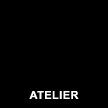






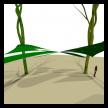
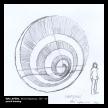
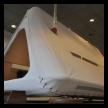
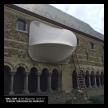
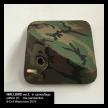
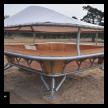
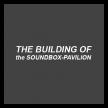
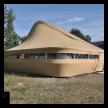
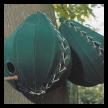
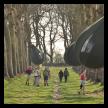


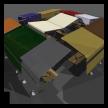
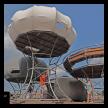
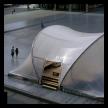
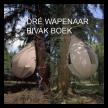
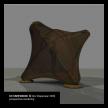
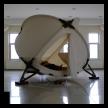
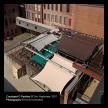
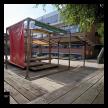
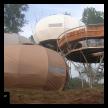
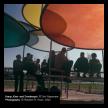
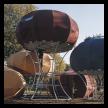
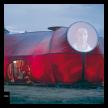
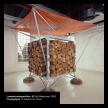
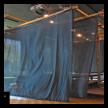
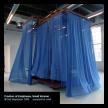
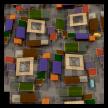
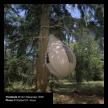
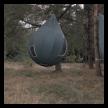
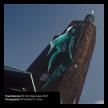
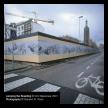
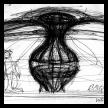
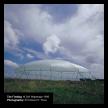

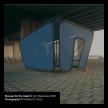
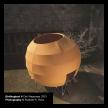
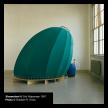
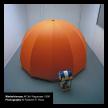
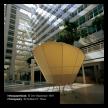
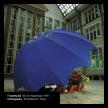
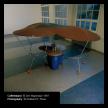
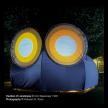
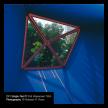
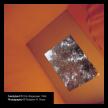
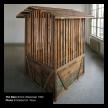
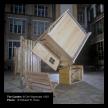
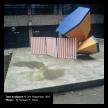
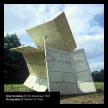
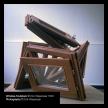
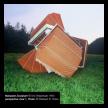
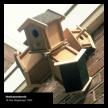
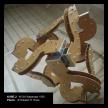
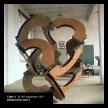
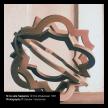

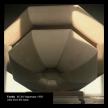
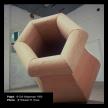
Webdesign:
Studio GloriusVandeVen